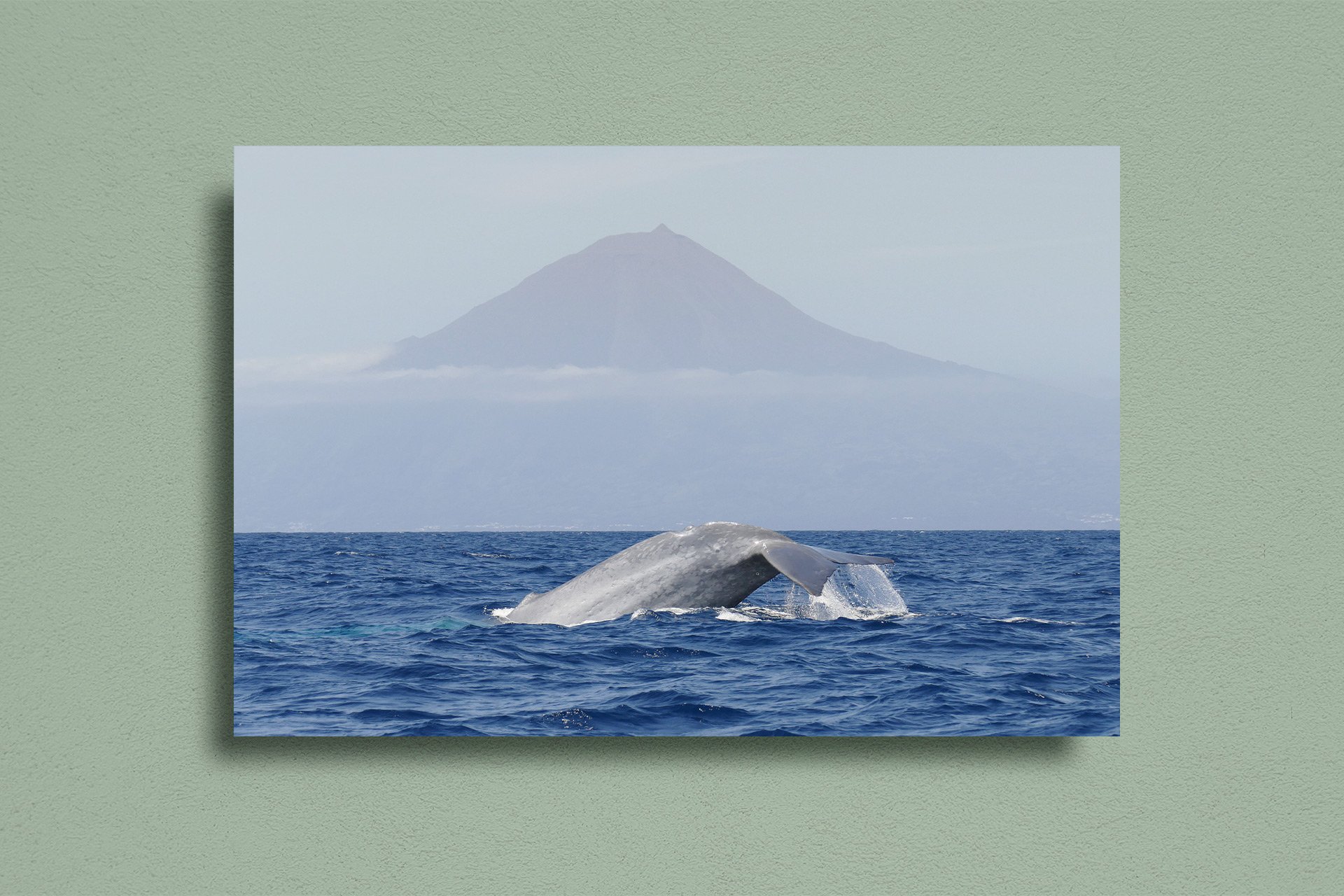Australien
Im Land der Kängurus und Koalas kann man fast das ganze Jahr über auch Wale beobachten.
Foto: Oliver Dirr / Whaletrips
wale: Australien
An der Ostküste Australiens kann man Tausende (!) Buckelwale auf ihrer jährlichen Wanderung zwischen subtropischen Fortpflanzungs- und antarktischen Nahrungsgebieten begleiten. Perfekter Roadtrip!
Jedes Jahr wandern Tausende (!) Buckelwale zwischen ihren antarktischen Nahrungs- und subtropischen Fortpflanzungsgebieten hin und her – meist sehr nah entlang der australischen Ostküste von New South Wales und Queensland, so dass man von zahlreichen Orten aus Touren machen kann, um die Wale je nach Jahreszeit auf ihrem Weg nach Norden oder Süden zu beobachten. Diese Migration gehört zu den größten maritimen Wanderbewegungen der Welt.
Im Juni und Juli machen sich die Buckelwale auf den Weg nach Norden, in dieser Zeit sind sie am besten im Süden zu sehen – von Eden bis Sydney. Im Oktober und November geht es zurück nach Süden, in dieser Zeit sind Hervey Bay, Gold Coast, Byron Bay und Coffs Harbour die besten Orte. Der Höhepunkt der Whale-Watching-Saison ist je nach Ort also eher früher oder später im Jahr.
Grundsätzlich: Wale wandern in unterschiedlichem Tempo, viele wandern auch gar nicht die volle Strecke, so dass man zwischen Juni und November überall an der Ostküste ganz gute Chancen hat, ihnen zu begegnen. Infos zu Whale Watching allgemein in Queensland und New South Wales gibt es bei wildaboutwhales
Mit gut 70 Prozent aller Touren ist die Ostküste Australiens mit Queensland und New South Wales die wichtigste Whale-Watching-Region Australiens. Sogar im Great Barrier Reef ist Walbeobachtung möglich, hier gibt es allerdings vor allem Zwergwale, keine Buckelwale.
Auch Südliche Glattwale (Südkaper) sind zwischen Juni und November an den Küsten von New South Wales zu finden, allerdings wandern sie nicht annähernd so weit nach Norden wie Buckelwale – Südkaper trifft man am ehesten rund um Eden (hier schlägt das Museum sogar Alarm, sobald Wale in der Twofold Bay gesichtet werden). In Eden gibt es auch das »Eden Killer Whale Museum«, Orcas sind hier allerdings eher unregelmäßig zu sehen.
Beobachtungen von Land aus sind in New South Wales an einigen Stellen sehr gut möglich: Das NSW Department of Environment and Climate Change listet 14 Orte innerhalb von Nationalparks zwischen der Cape Byron State Conservation Area im Norden und dem Ben Boyd National Park im Süden auf.
Die Fluke eines jungen Buckelwals, der vor der Küste von New South Wales sehr ausdauernd neben seiner Mutter herumspringt. Foto: Oliver Dirr / Whaletrips
Zwischen Juni und September wandern Südkaper zwischen den Küsten von Tasmanien und Victoria hin und her. Der beste Ausgangspunkt für eine Boots-Tour ist die Port Philipp Bay, direkt von Melbourne aus. Etwas weiter westlich liegt Warrnambool, das sich selbst als den »Kindergarten der Südkaper« bezeichnet, weil sich hier immer wieder zahlreiche Südkaper einfinden, um ihre Jungen groß zu ziehen. Von Land aus kann man sie am besten am Logan’s Beach beobachten.
Die Gewässer des Great Australian Bight Marine Park gehören zu den bedeutenden Fortpflanzungs-Arealen für Südkaper – zwischen Juni und November können hier täglich zwischen 60 und 100 von ihnen beobachtet werden. Von Yalata aus, etwas weiter im Westen, sind auch Landbeobachtungen möglich. Rund um die Fleurieu Halbinsel in der Nähe von Adelaide können Südkaper und auch Buckelwale am besten zwischen Mai und Oktober beobachtet werden.
Zwischen November und Mai versammeln sich außerdem zahlreiche Blauwale in der Bass Straße zwischen Victoria und Tasmanien – diese Gewässer sind eine von weltweit nur zwölf bekannten Gegenden, an denen Blauwale regelmäßig gesichtet werden. Am besten kann man sie zwischen November und Mai von Portland aus beobachten.
Auch an der Südküste Westaustraliens kann man zwischen Mai und Dezember Buckelwale und Südkaper beobachten, gelegentlich auch Blauwale. Die besten Orte für Whale-Watching-Touren sind Esperance, Albany, Augusta, Dunsborough und Perth an der Südwestküste, an vielen Orten sind auch Beobachtungen von Land aus möglich.
Bekannte Fortpflanzungsgebiete der Südkaper sind die Gewässer um Bremer Bay, Fitzgerald River National Park und Cape Arid. Der Bremer Bay Canyon ist überdies auch eine ganz gute Gegend, um Orcas zu beobachten, die man hier vor allem zwischen Februar und April häufig antrifft. Insgesamt ist das Thema Whale Watching an der weiteren Westküste aber nicht so bedeutend wie an der Ostküste und in Victoria.
Foto: Oliver Dirr / Whaletrips
TO DO: Australien
Bei einem Roadtrip an der Ostküste Australiens kann man im Great Barrier Reef schnorcheln und die größte Sandinsel der Welt mit 200 Meter hohen Dünen erklettern. Noch weiter südlich gibt es die besten Surf-Strände und jede Menge Kängurus und Koalas.
Das Great Barrier Reef (Weltkulturerbe! Weltwunder!) an der Nordostküste Australiens ist das größte Korallenriff der Welt und mit über 350 Korallenarten die größte von Lebewesen geschaffene Struktur der Welt. Das Riffsystem erstreckt sich über 2.000 Kilometer und besteht aus mehreren Tausend Inseln und Sandbänken – und es ist so groß, dass man es sogar vom Weltraum aus sehen kann.
Hier leben Milliarden von Tieren: Tropenfische, Rochen, Seesterne, Schwämme, Quallen, Delfine, Haie, Schildkröten, sogar Zwergwale gibt es hier – der perfekte Ort zum Schnorcheln, Tauchen oder auch nur für eine Fahrt mit dem Glasbodenboot. Hauptsaison ist zwischen Juni und Dezember, von August bis Januar ist die Unterwassersicht am besten. Von Cairns aus ist der Weg am kürzesten, 30 Kilometer mit dem Boot.
„Weiter auf dem Weg nach Süden gelangt man über Sunshine Coast und Coald Coast nach Byron Bay, das nicht nur wegen seiner Surf-Strände und Whale-Watching-Touren einer der beliebtesten Orte an der Ostküste ist.“
Etwas weiter südlich liegt Fraser Island, mit 120 Kilometern Länge und 15 Kilometern Breite die größte Sandinsel der Welt. Hier gibt es 200 Meter hohe Dünen (!), Regenwälder und jede Menge Tiere. Die Insel ist von Hervey Bay aus gut erreichbar, kann allerdings nur mit dem Geländewagen erkundet werden – es gibt auch geführte Touren.
Hervey Bay ist einer der meist besuchten Whale-Watching-Orte an der Ostküste. Von hier aus fahren die Boote von Anfang August bis Anfang November in die Platypus Bay und von dort von Schule zu Schule, um die aktivsten Wale zu finden. Es gibt auch einige Anbieter mit Unterwasserfenstern im Boot, um die Tiere unter Wasser zu sehen, ohne gleich mit ihnen schwimmen zu müssen.
Weiter auf dem Weg nach Süden gelangt man über Sunshine Coast und Coald Coast nach Byron Bay, das nicht nur wegen seiner perfekten Surf-Strände und Whale-Watching-Touren einer der beliebtesten Orte an der Ostküste ist, sondern auch wegen der vielen hier lebenden Kängurus und Koalas. Sehr beliebt ist der Lighthouse Trail, vorbei an Stränden und Steilklippen, am Leuchtturm sind auch Walbeobachtungen vom Land aus möglich.
Der ideale Begleiter für eure nächste Reise: Im Shop findet ihr unsere NOTES in fünf tollen Farben – mit ganz viel Platz für Notizen, Beobachtungen und Erinnerungen. Jetzt bestellen!
Auf halbem Weg nach Sydney liegt Coffs Harbour, ebenfalls ein guter Ort für Whale-Watching-Touren. Nicht weit im Landesinneren liegt außerdem der Dorrigo Nationalpark, ein Regenwald mit schönen und einfachen Rund-Wanderwegen, in dem man über eine Plattform (Skywalk) sogar auf Höhe der Baumkronen gelangen kann. Der Park ist Teil der Gondwana-Regenwälder, die zum Weltkulturerbe gehören.
Von Coffs Harbour sind es noch ca. 500 Kilometer bis nach Sydney, wo man am Bondi Beach nachbräunen, den Hafen und das Opera House bestaunen oder über den Clifftop Walk von Bondi nach Coogee wandern kann. 65 Kilometer westlich von Sydney liegen außerdem die Blue Mountains, die man als Tagesausflug oder mit einer Übernachtung vor Ort bewandern kann.
Noch etwas weiter südlich liegen an der Grenze zu Victoria die Snowy Mountains, die Teil der Australischen Alpen sind. Höchste Berge: Mount Kosciuszko (2228 Meter) und Mount Townsend (2209 Meter), also nicht ganz so hoch, wie die Berge der Europäischen Alpen – Skifahren ist trotzdem möglich.
NOCH MEHR ORTE
〰️
NOCH MEHR ORTE 〰️
Whaletrips Shop
Über den Wal, die Welt und das Staunen
Das Beste aus zehn Jahren Walfahrt. Bei uns im Whaletrips-Shop auch mit persönlicher Widmung nach Wunsch!
Whaletrips Shop
Unsere Wale als Karten und Sticker
Farbenfroh, schwarz-weiß illustriert, zum Aufkleben: Unsere Wale gibt es auch als Sticker- und Grußkarten-Set!
Whaletrips Shop
Notizhefte: Unsere Notes und Travel Notes
Die idealen Begleiter für eure nächste Walfahrt: in fünf tollen Farben im Whaletrips-Shop erhältlich!
Whaletrips Shop
Elegante Fine Art Prints für Zuhause
Unsere beliebtesten Motive gibt es auch als edle Fine Art Prints für Zuhause. Verschönern jede Wand!








